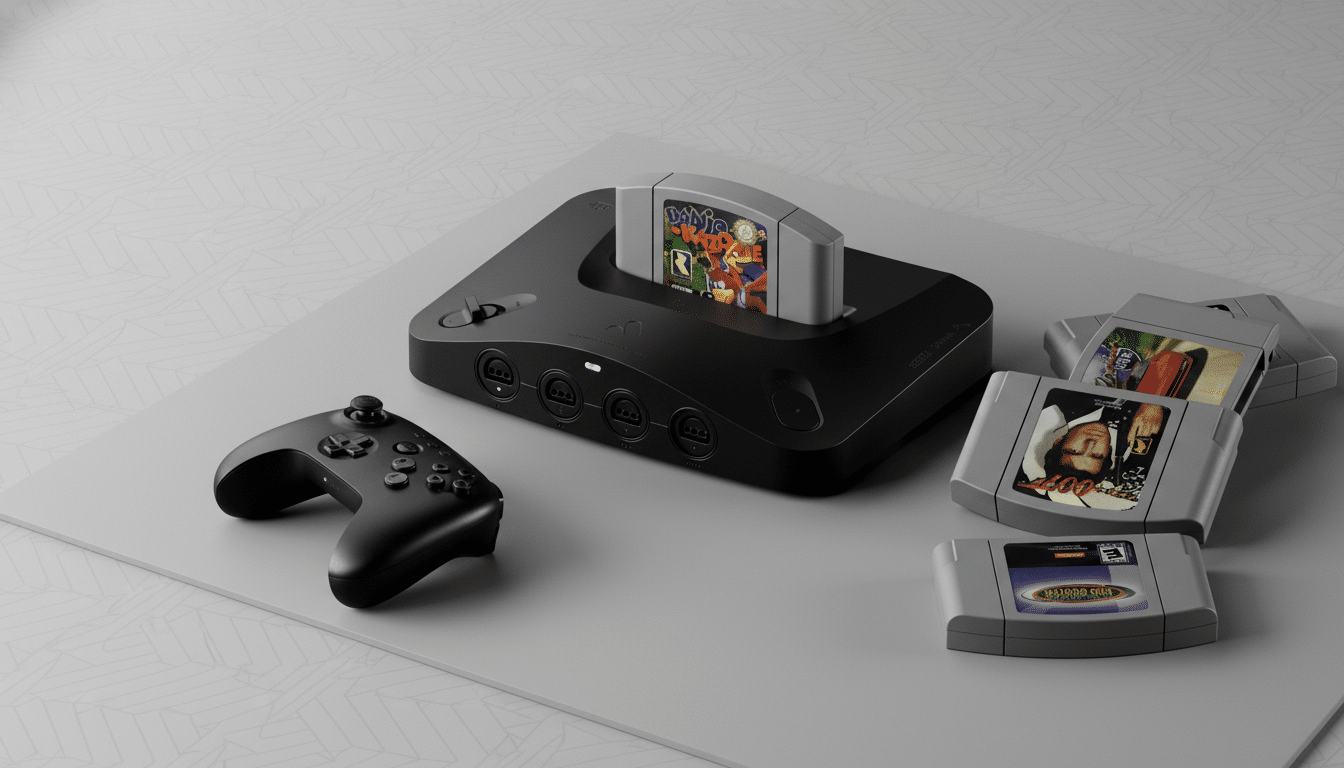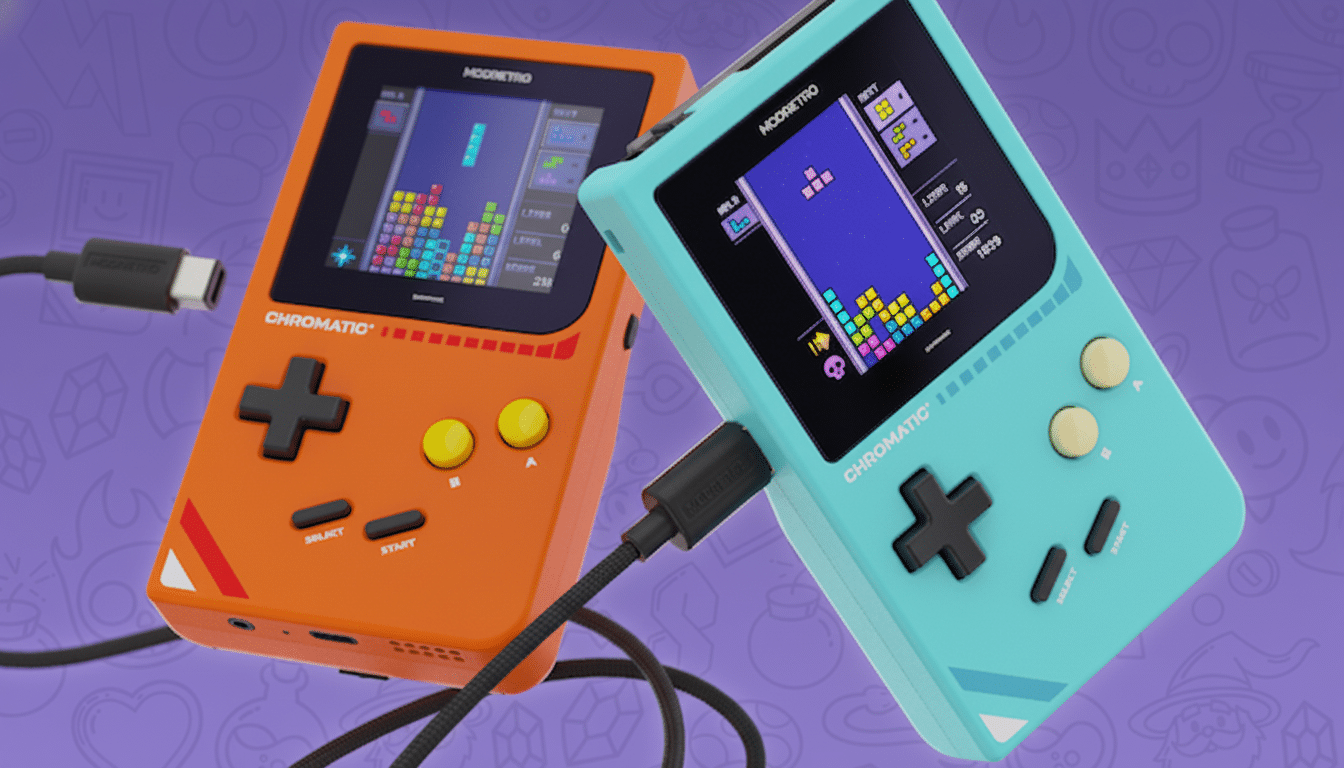ModRetro has unveiled the M64: a plastic, trident controller-shaped cannon blast back to 1996, including those not-exactly-for-their-time translucent plastics and four-port couch multiplayer functionality.
Costing just $199, with hardware already in mass production, the M64 is hoping to recapture a little late-’90s living room magic while offering modern reliability and HDMI convenience.

Faithful design and modern amenities for the M64 console
The M64 comes in three clear colorways — green, purple, and white — a direct reference to popular shells like Atomic Purple but without the stark minimalism of recent retro boxes. Out front are four controller plugs — one for each port, a nod to the local-multiplayer DNA that permeated classics like Mario Kart 64 and GoldenEye 007. Out back, the basics are handled: USB-C power, HDMI out, two more USB-C slots, and an SD card slot to house your firmware and cores.
The controller features the series’ iconic, three-prong shape and stick layout, including an octagonal gate that provides cushioning for accurate directional inputs for games that require specific angles — such as perfect drifting lines in F-Zero X or consistent analog notches in Super Mario 64.
The major update is the stick mechanism itself; a modern piece replaces the wear-prone contraption of ’90s pads, which would develop dead zones after sustained manhandling.
One notable change is the elevation of a menu dial in place of the original hardware’s eject. It’s not decorative, either; it’s a physical control that probably interacts with system-level menus even when you don’t have your core loaded — akin to how many FPGA platforms handle OS-level navigation.
FPGA muscle and MiSTer roots behind the M64 project
The core for the M64 is being made by the same guy who created the highly praised MiSTer N64 project — which in itself has been a watershed development considering many have always believed that it’s not possible to replicate the console due to its complicated architecture. The M64 will see use of a stronger FPGA compared to the DE10-Nano, which most MiSTer builds are based on, meaning there should be fewer or no performance ceilings that hobbyists have come to expect and find novel ways around.
FPGA systems attempt to replicate original hardware logic at the gate level, which is valued for predictable timing as well as for low latency. Outlets such as Digital Foundry have regularly called attention to these advantages in their analyses of the MiSTer and other FPGA products, especially for games with a high degree of action where input lag is pronounced. If the M64’s execution is solid, this could provide a near-native feel on contemporary TVs, but without the fragility and maintenance that comes with aging consoles.

Open Source & Community Strategy Potential
Hardware and software for the M64 will be open source, company founder Palmer Luckey wrote. That matters. The success of MiSTer was proof of how fast an ecosystem can progress when talented developers are able to audit, enhance, and port cores. If the tools and documentation are strong, it’s possible that M64 could grow beyond an N64 machine into a larger, living FPGA platform — so long as licensing and legal use of game assets stays in users’ hands.
Open designs also facilitate preservation. When the community can maintain and optimize cores, we see that the hardware becomes less a complete product and more of something that evolves with each new revision.
Price positioning and market context for ModRetro’s M64
At $199, the M64 is more affordable than many boutique retro solutions, all without sacrificing the tactile nostalgia fans crave. Take the install base: Nintendo’s official sales numbers suggest the N64 was good for some 33 million units worldwide, and the allure of original-feeling play has only deepened over time as authentic sticks degrade and CRTs disappear from living rooms. With four ports wired up, an HDMI pipeline, and industrial design that’s super faithful to the original, ModRetro is aiming for a sweet spot between purist authenticity and plug-and-play simplicity.
It doesn’t hurt that a transparent shell does more than recall the period; it telegraphs intent. It’s not just a black box that runs old games; it’s an object to put on display that happens to wear its ’90s heart on its sleeve, in a way that almost dares you to bust out some cartridges and start arguing about Player 1.
What we still don’t know about the M64 release details
It has been confirmed that mass production of the M64 is ongoing, though no certain ship date has been set yet. Key details to look for include:
- Video options for modern displays
- How the menu dial integrates into core management
- Breadth of compatibility with accessories
- Latency and accuracy findings from independent testers
Thus far the early signs are promising, but the proof in all of this will be in side-by-side testing performed by timing-obsessed and edge-case-obsessed communities.
For now, the M64 is a promising return to that holistic vision of aesthetics and ergonomics that made Japan’s late-’90s console scene so unique — but one combined with much of the technical ambition that followers of FPGA hardware will be accustomed to. If they execute what they’re pitching, living rooms may get all translucent on us again, this time with rock-solid HDMI and a community-built roadmap.

